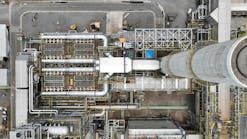HPCL, Rajasthan state plan groundbreaking for Barmer integrated complex
HPCL Rajasthan Refinery Ltd. (HRRL), a 74-26% joint venture of Hindustan Petroleum Corp. Ltd. (HPCL) and the state government of Rajasthan, will kick off construction activities in mid-January on the JV’s previously announced project to set up a 9 million-tonne/year integrated refinery and petrochemical complex at Pachpadra Tehsil, Barmer District, Rajasthan (OGJ Online, Apr. 18, 2017).
A groundbreaking ceremony for the Barmer integrated complex is scheduled for Jan. 16, India’s Ministry of Petroleum & Natural Gas (MOPNG) said.
Start of construction on the 431.29 billion-rupee complex follows a series of setbacks and technical revisions plaguing the project that, first conceived in 2006, did not receive official environmental clearance to proceed from India’s Ministry of Environment, Forest, and Climate Change (MOEFCC) until recently (OGJ Online, Aug. 17, 2017; July 18, 2014; Mar. 14, 2013; Sept. 19, 2007).
Once completed, the refinery—which will take about 4 years to build—will be equipped to produce Bharat Stage 6-grade (equivalent to Euro 6-quality) fuels from a feedstock of both locally produced and Saudi Arabian crudes to meet increased demand for petroleum products in Rajasthan as well as other northern Indian states.
During its first 8 years of operation, the refinery will be designed to process 1.5 million tpy of Rajasthan crude from nearby Mangla fields and 7.5 million tpy of imported Arab Mix crude—consisting of Arab Light and Arab Heavy grades—before switching to a full 9 million-tpy feedstock slate of Arab Mix beginning in its ninth year of operation, according to documents filed with MOEFCC.
The Barmer refinery is scheduled for startup sometime in 2022.
Processing overview
According to Engineers India Ltd.’s revised environmental impact assessment for the Barmer project filed with MOEFCC in July 2017, the complex will include the following nameplate processing capacities:
• Crude distillation, 9 million tpy.
• Vacuum distillation, 4.8 million tpy.
• Naphtha hydrotreating, 1.8 million tpy.
• Isomerization, 260,000 tpy.
• Continuous catalyst regeneration reforming, 300,000 tpy.
• Diesel hydrotreating, 4.1 million tpy.
• Fluid catalytic cracking, 2.9 million tpy.
• Delayed coking, 2.4 million tpy.
• Polypropylene (two units), 490,000 tpy each
• Butene-1, 59,000 tpy.
• Linear low-density/high-density polyethylene (two swing units), 416,000 tpy each.
• Vacuum gas oil hydrotreating, 3.5 million tpy.
• Dual-feed steam cracking, 820,000 tpy.
• Low-pressure ethylene recovery, 77,000 tpy.
• Benzene recovery, 96,000 tpy.
• Pyrolysis gasoline hydrotreating, 550,000 tpy.
• BTX fractionation, 550,000 tpy.
• FCC gasoline depantanizing, 870,000 tpy.
• Gasoline hydrotreating, 530,000 tpy.
• FCC C5 Merox, 220,000 tpy.
• Saturated LPG Merox, 162,000 tpy.
• LPG depropanizing, 162,000 tpy.
• Fuel gas treating, 1,425 tonnes/day.
• Hydrogen generation, 37,000 tpy
• Pressure-swing adsorption, 28,000 tpy.
• Sour-water stripping (hydroprocessing), 100 cu m/hr.
• Sour-water stripping (nonhydroprocessing), 250 cu m/hr.
• Amine regeneration (three units), 480 cu m/hr each.
• Sulfur recovery with tail-gas treatment (two units), 199 tonnes/day each.
Contact Robert Brelsford at [email protected].


